

In 2003 we decided to rebuild our 1940 Cadillac 60s. I had met Gary Hatfield at Pate in Texas (back when it was in the big pasture south of Fort Worth) and there was no doubt that he would be the builder. We wanted a cruiser, not a new car with 1940 technology that we would have had to trailer everywhere. The goal was to keep it a 1940 Cadillac, with only a few concessions. One was wire wheels, which were available in the aftermarket in 1940, but rarely seen. The steel sunroof was actually available as a factory option in 1940, but it was hand-cranked and notorious for leaking. For that reason we opted for a modern electric steel sunroof rather than hunting down an original to cut out and weld into our roof. We also went with a more modern paint and color, from a 1965 GTO I once owned, and we steered clear of pearl coats, irridescents, stripes, and flames. The dark color was selected especially to show off the chrome and whitewalls. Inside we were less conservative. We were dissatisfied with the sound quality of antique car radios rebuilt with modern electronics so we replaced the radio with a Sony sound system and used the button opening for an air conditioning vent. We selected pleated vinyl upholstery because it looks good, it's durable, and it's easy to keep clean, and because pleated upholstery is timeless and will never go out of style. The result is a modern automobile with a 1940 body. We can, and do, drive it anywhere, even at freeway speeds. Perhaps we'll see you at a car show some day.
| Factory option dual sidemounts | Custom stainless steel gas tank (19-gallon capacity) | |
| Factory option fender skirts | 12-volt electrical system with Tuff Stuff alternator | |
| Factory option foglamps | Vintage Air air conditioning & heat | |
| Dual Trippe Driving Lights | Sony AM/FM/CD, 10 CD changer, speakers | |
| GM 454/425 hp crate V8 | Electric antenna | |
| Edelbrock 4 bbl carburetor | Painless Performance Products wiring harness | |
| HPC Exhaust headers & pipes | Hollandia power steel-top sunroof | |
| GM 700R4 automatic transmission with overdrive | Ididit tilt steering column | |
| Fatman coil-over front suspension | Custom vinyl pleated upholstery | |
| Power Steering | Custom vinyl cruising bra | |
| 1979 Ford Thunderbird rack & pinion | Custom German wool carpet | |
| Ford nine-inch 3:50 ratio rear end | Tinted glass | |
| Four-wheel power disc brakes, GM calipers front, Ford Explorer rear | Electric windshield wipers | |
| Master Power Brakes power brake unit | Custom third brake light | |
| Chassis Engineering rear leaf springs | Diamondback Classic wide white wall radials (6) | |
| Custom rear sway bar | Wheel Vintique 16-inch chrome wire wheels (6) | |
| Custom Auto 7-row radiator | 1965 GM (Pontiac) Blue Charcoal paint, PPC base coat clear |
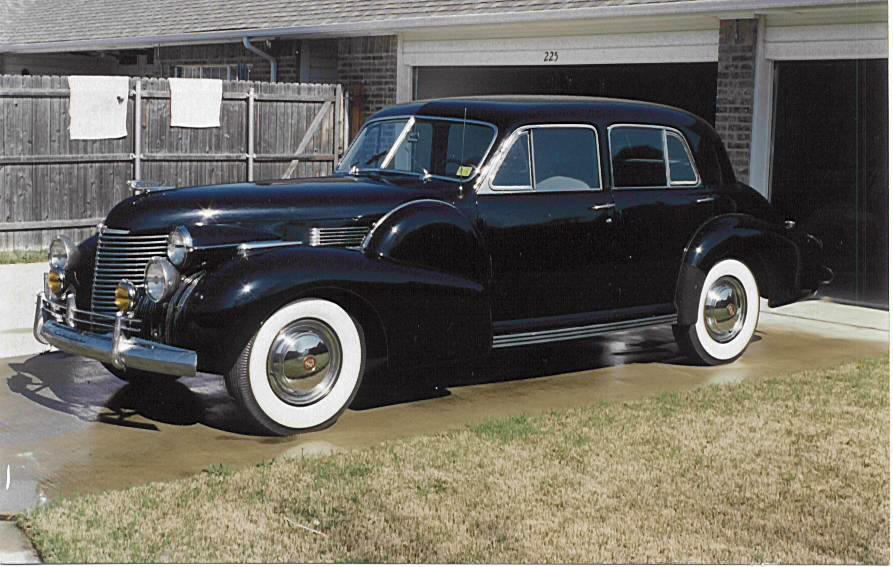
|

|
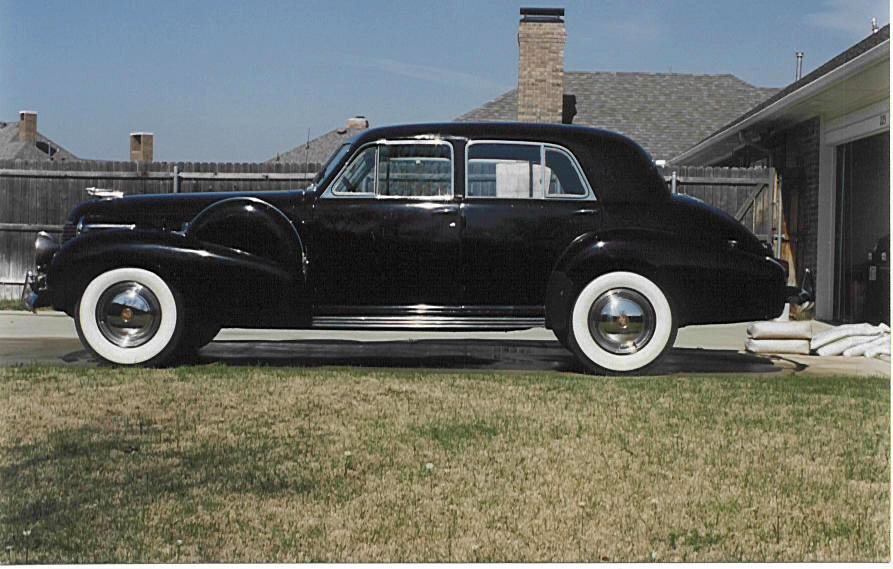
|

|
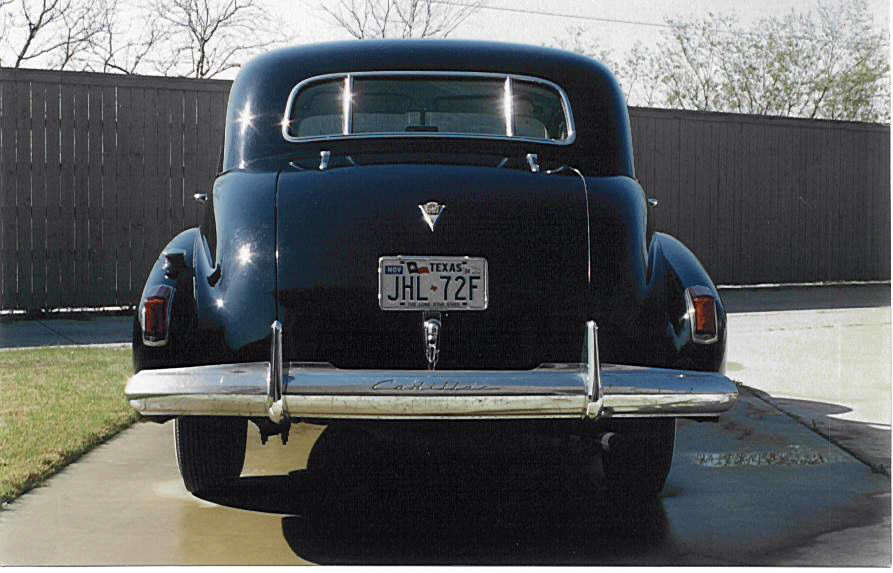
|
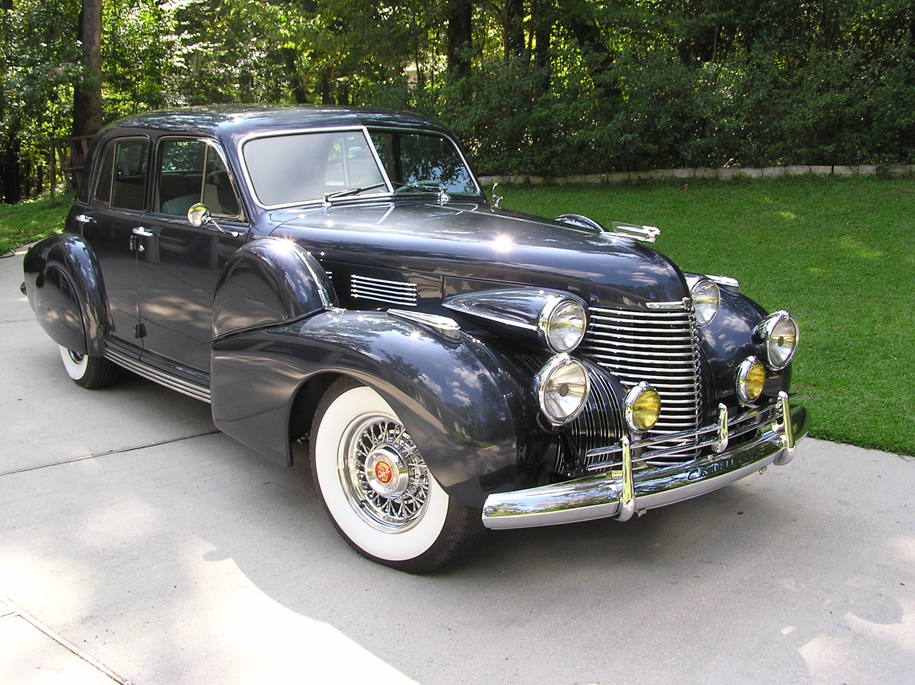
|

|
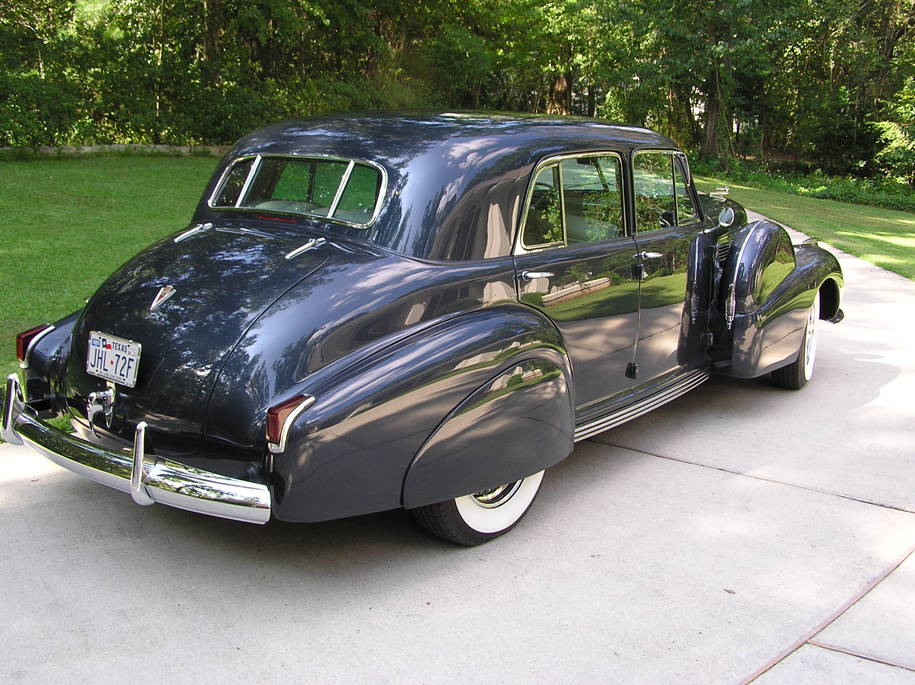
|

|
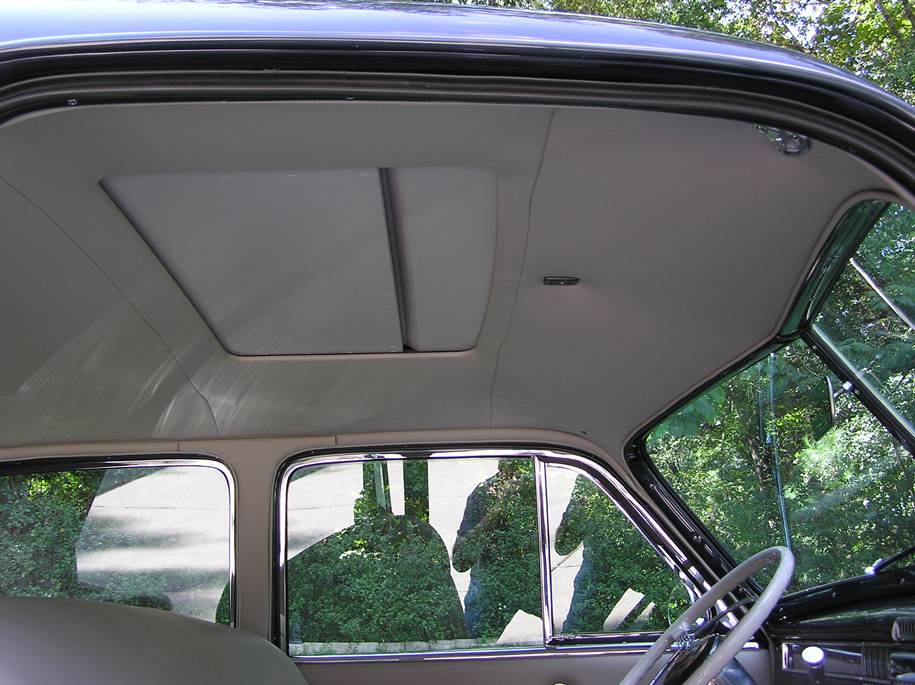
|

|
From the early 1920s until the 1970s when the title began to be lost to Mercedes Benz, the Cadillac was the American symbol of success. A Cadillac was never the most expensive car, nor the largest, nor the fastest. But they were built to the highest standards of quality, and owning a Cadillac became the goal of many young people just starting their careers.
In 1936, General Motors’ chief stylist Harley Earl hired 23-year-old Bill Mitchell to design the 1938, 1939, and 1940 Cadillacs. (Earl and Mitchell would collaborate in the 1950s to produce the Corvette). For the new models, Mitchell eliminated running boards, allowing the body to be widened and dropped over the frame, providing more interior width and lowering the car several inches without reducing headroom. The rear doors were front-hinged, eliminating the “suicide doors”. The trunk became an integral part of the car rather than an afterthought add-on. Finally, cowling over the outboard side mounts simplified access to the spare tires.
The smallest car in the lineup, the 60 Special quickly became the most popular Cadillac model ever, appealing to a growing number of young successful owners that preferred to forego chauffeurs and drive themselves. Driving this car was fun.
These younger buyers attracted the attention of automobile manufacturers everywhere. To them, driving a car was all about going fast and then going even faster, and manufacturers paid attention. By the late 1930s, advances in engineering technology, wind tunnel testing, and the auto makers' participation in the fledgling sport of motorcar racing demonstrated that a car could be built to go faster without resorting to larger engines by smoothing the lines to reduce air drag. Accordingly, a new buzzword, STREAMLINING, emerged from Detroit.
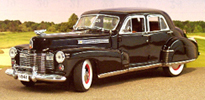 So 1941 saw the most radical changes in Cadillac styling yet. First, Mitchell integrated the headlights
into the fenders, eliminating the air-grabbing lamp pods. New tire technology allowed him to
locate a single spare in the trunk and the outboard sidemounts,
optional in 1940,
were gone forever. Finally, fender skirts,
also optional in 1940, were mandated to reduce air drag in the rear wheelwells.
So 1941 saw the most radical changes in Cadillac styling yet. First, Mitchell integrated the headlights
into the fenders, eliminating the air-grabbing lamp pods. New tire technology allowed him to
locate a single spare in the trunk and the outboard sidemounts,
optional in 1940,
were gone forever. Finally, fender skirts,
also optional in 1940, were mandated to reduce air drag in the rear wheelwells.
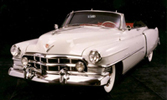 The last major Cadillac design change was delayed by World War II and would not appear until 1950.
That was the one-piece molded windshield. Fins and frills would come and go, but
in terms of styling innovation, the 1950 Cadillac was no different
than the cars in the showrooms today.
The last major Cadillac design change was delayed by World War II and would not appear until 1950.
That was the one-piece molded windshield. Fins and frills would come and go, but
in terms of styling innovation, the 1950 Cadillac was no different
than the cars in the showrooms today.
But it was the 1941 changes that signified the end of the era of the distinctive styles of the 1920s and 1930s, which were dominated by outboard headlights and sidemounted spares. A stroll through the parking lot in the wedding scenes of the movie “The Godfather” would never be quite the same again.
The 1940 Cadillac 60 Special is the last of its kind.